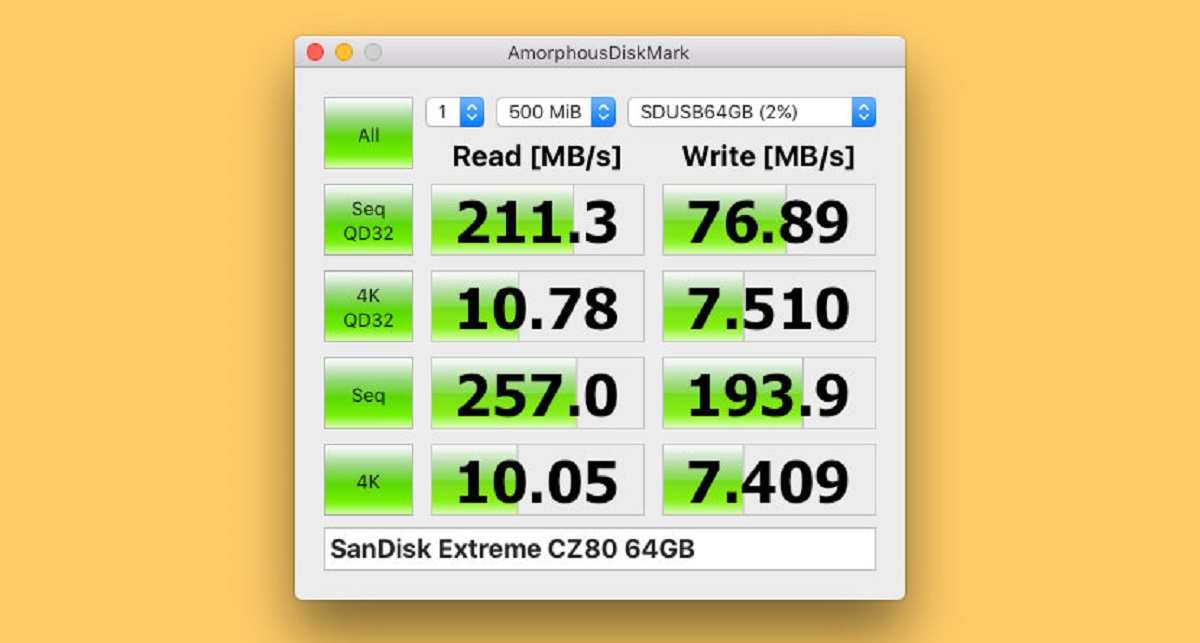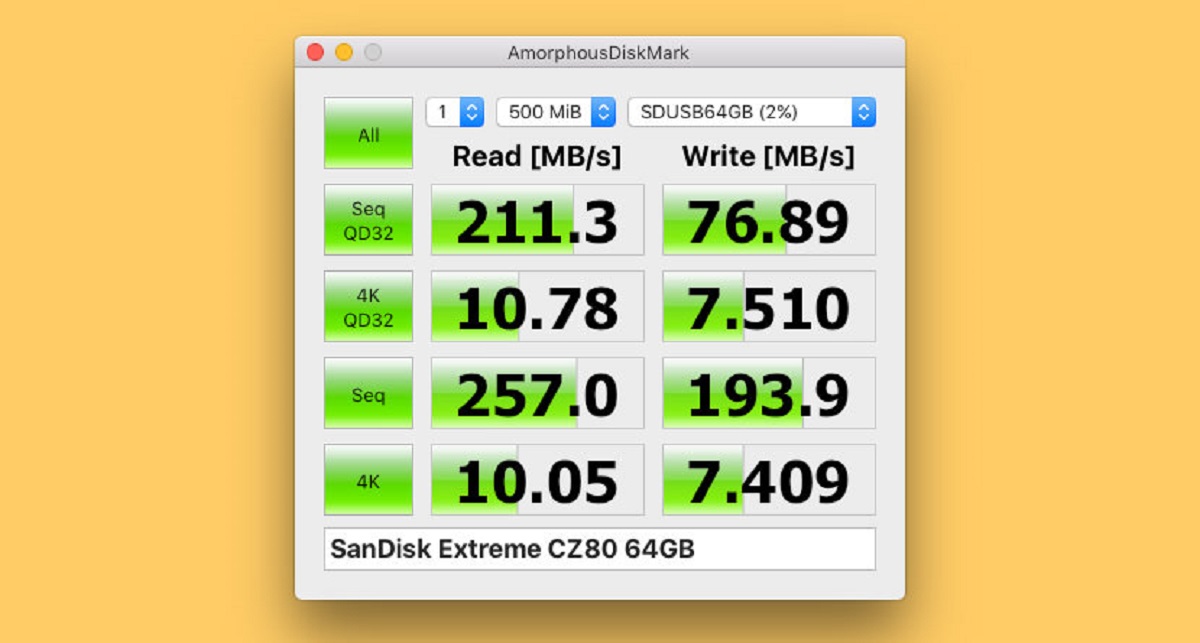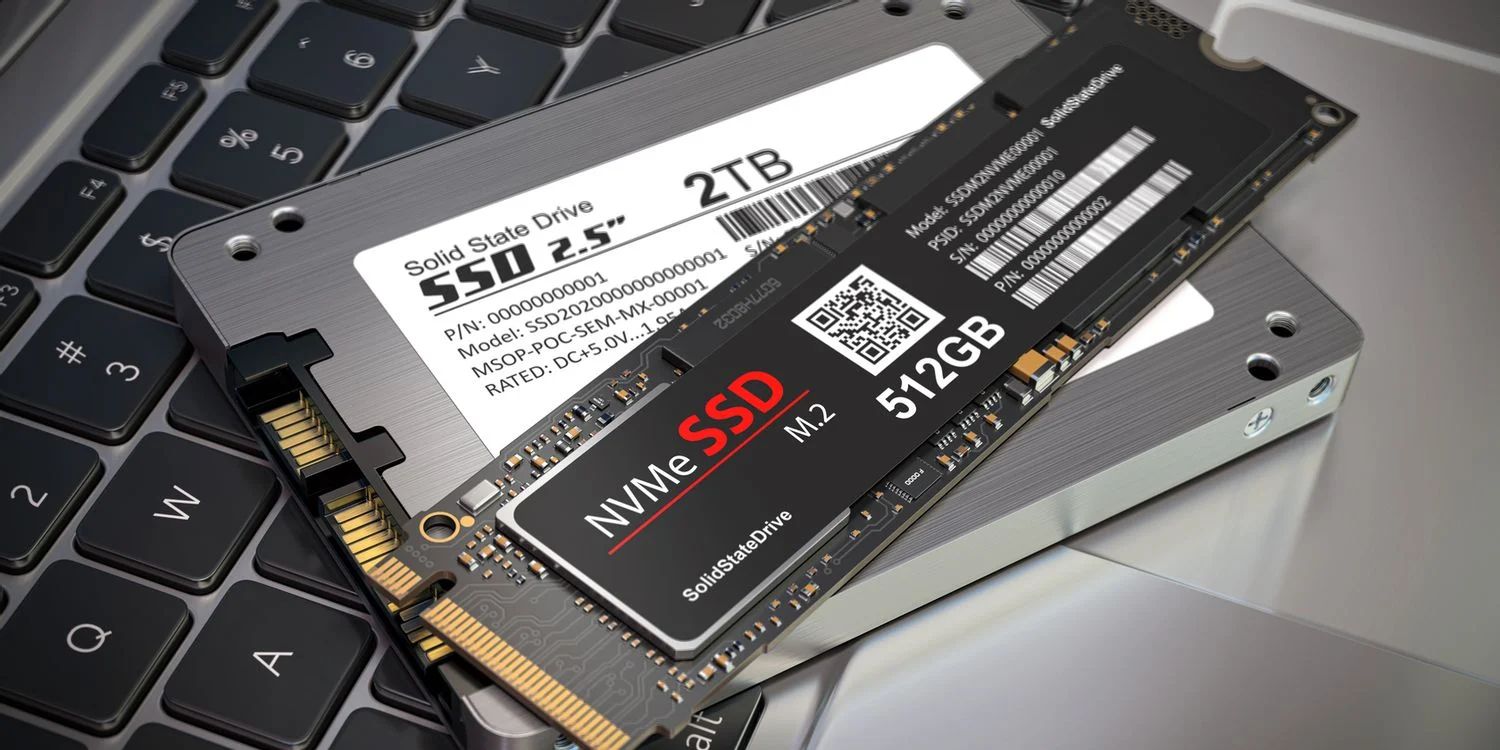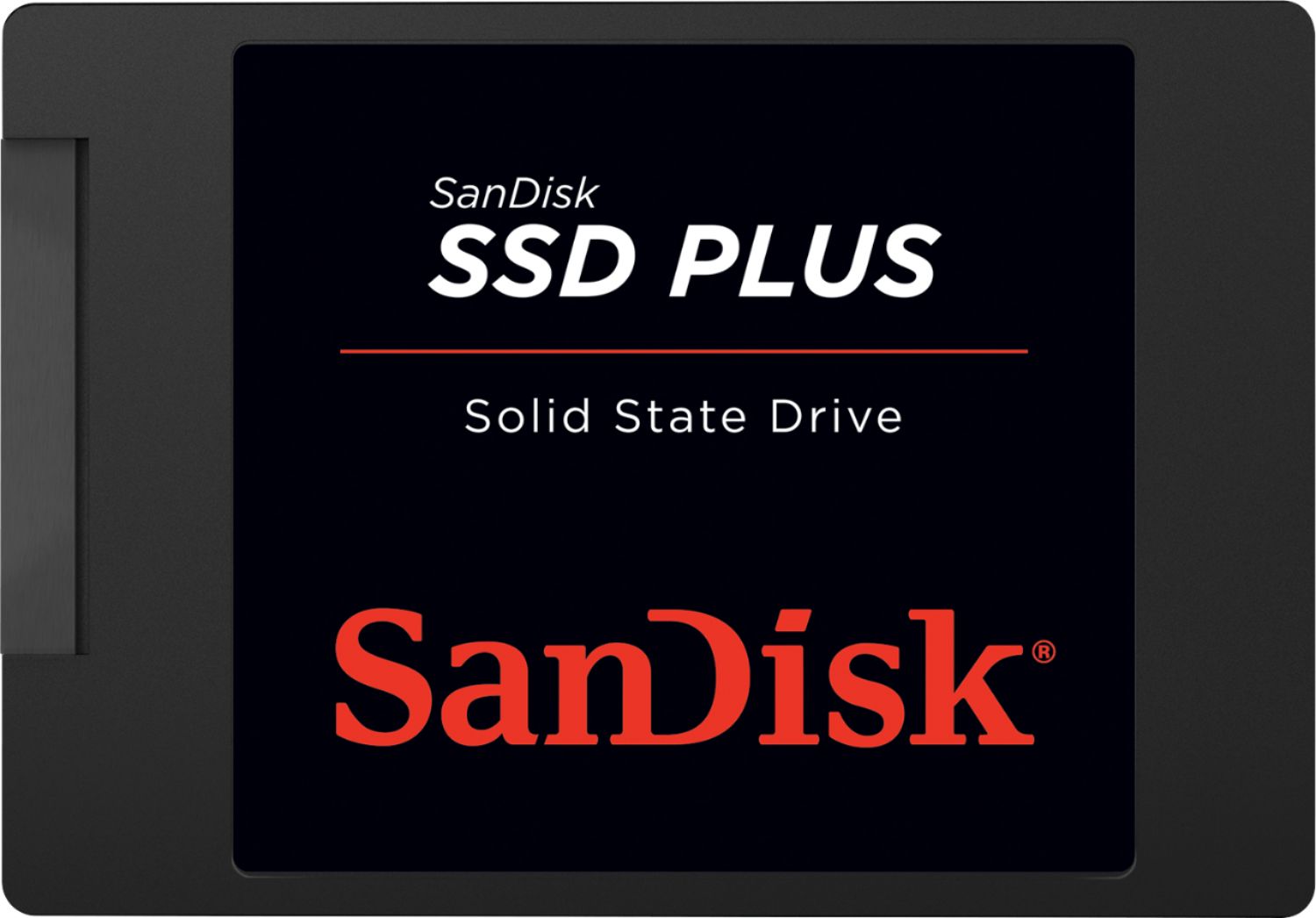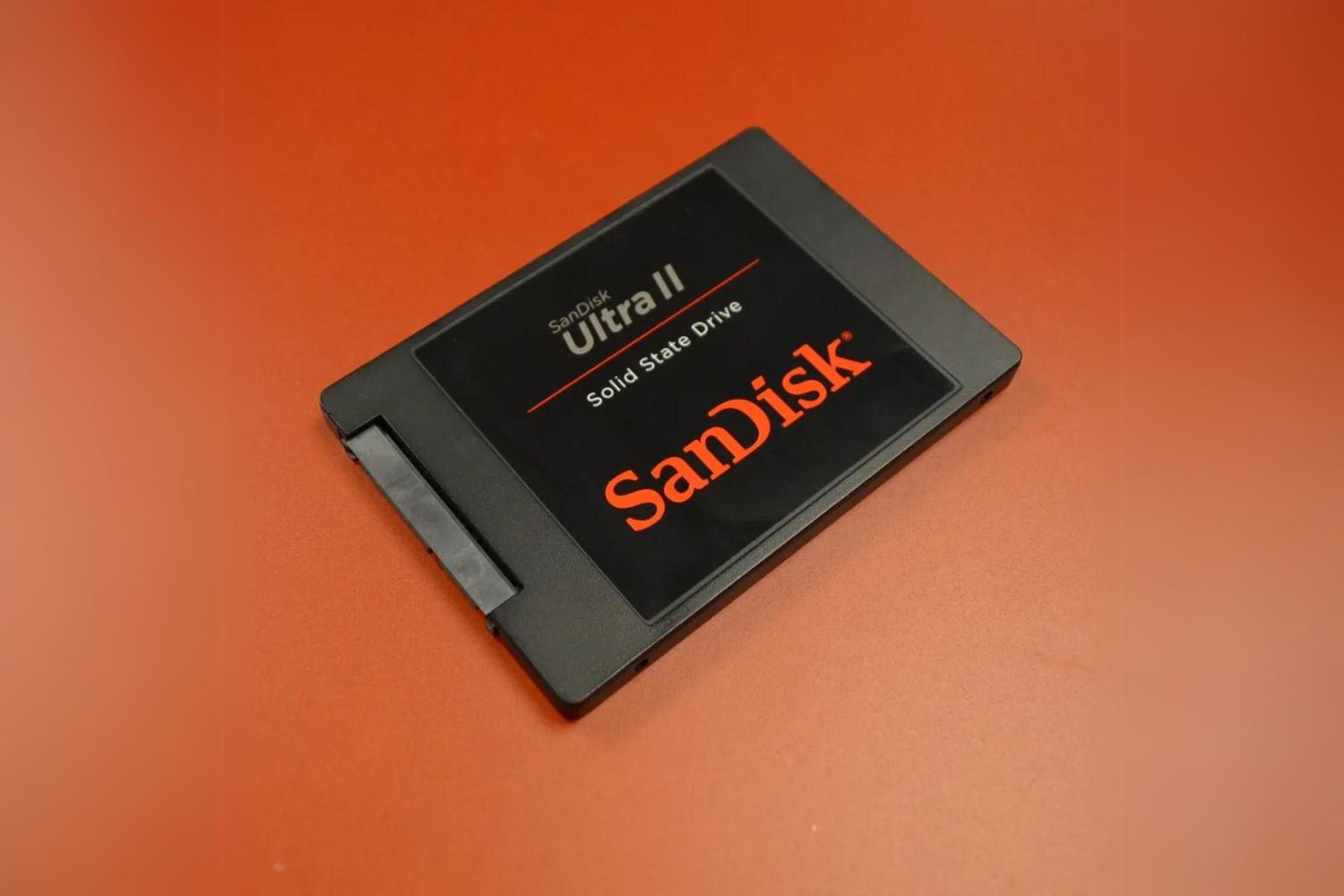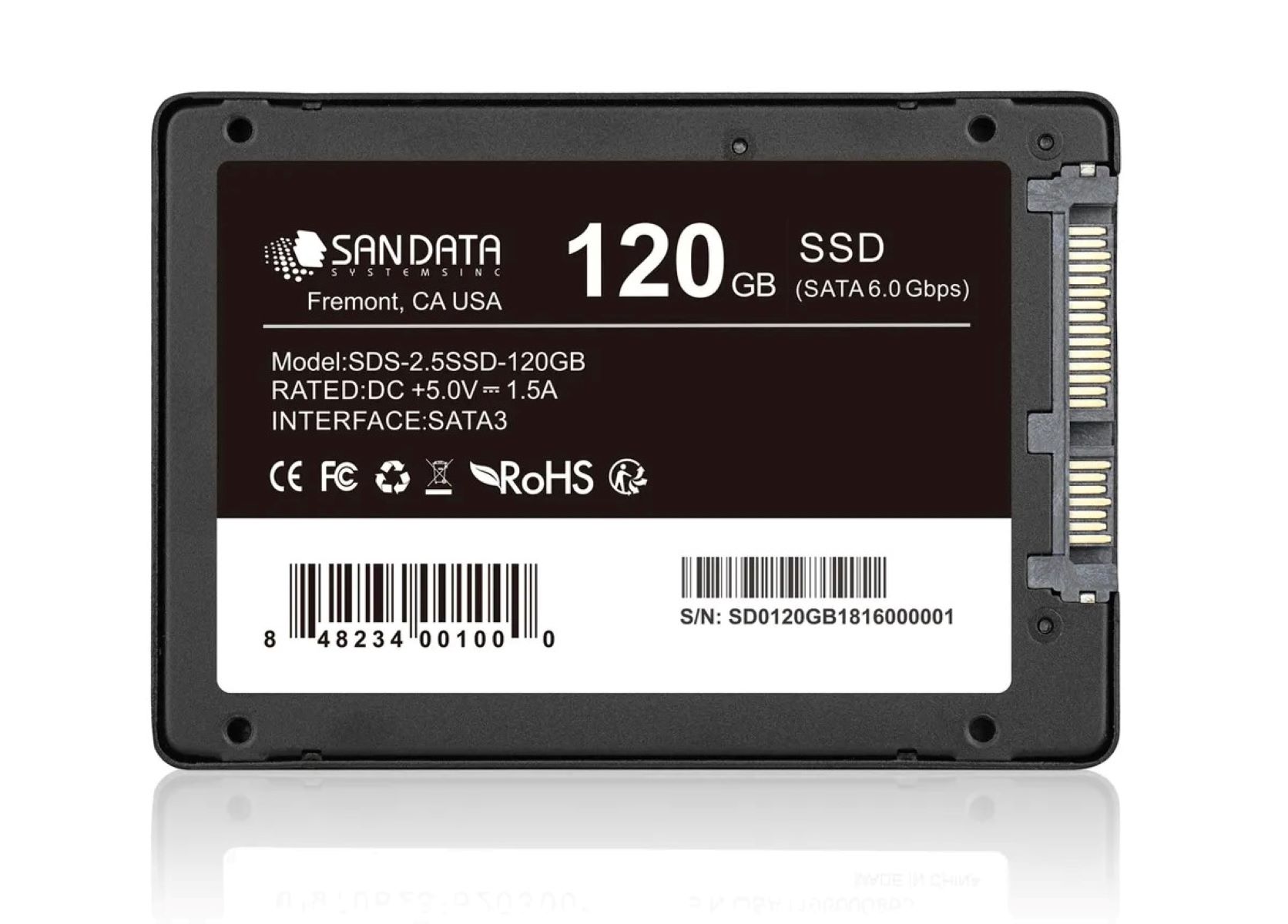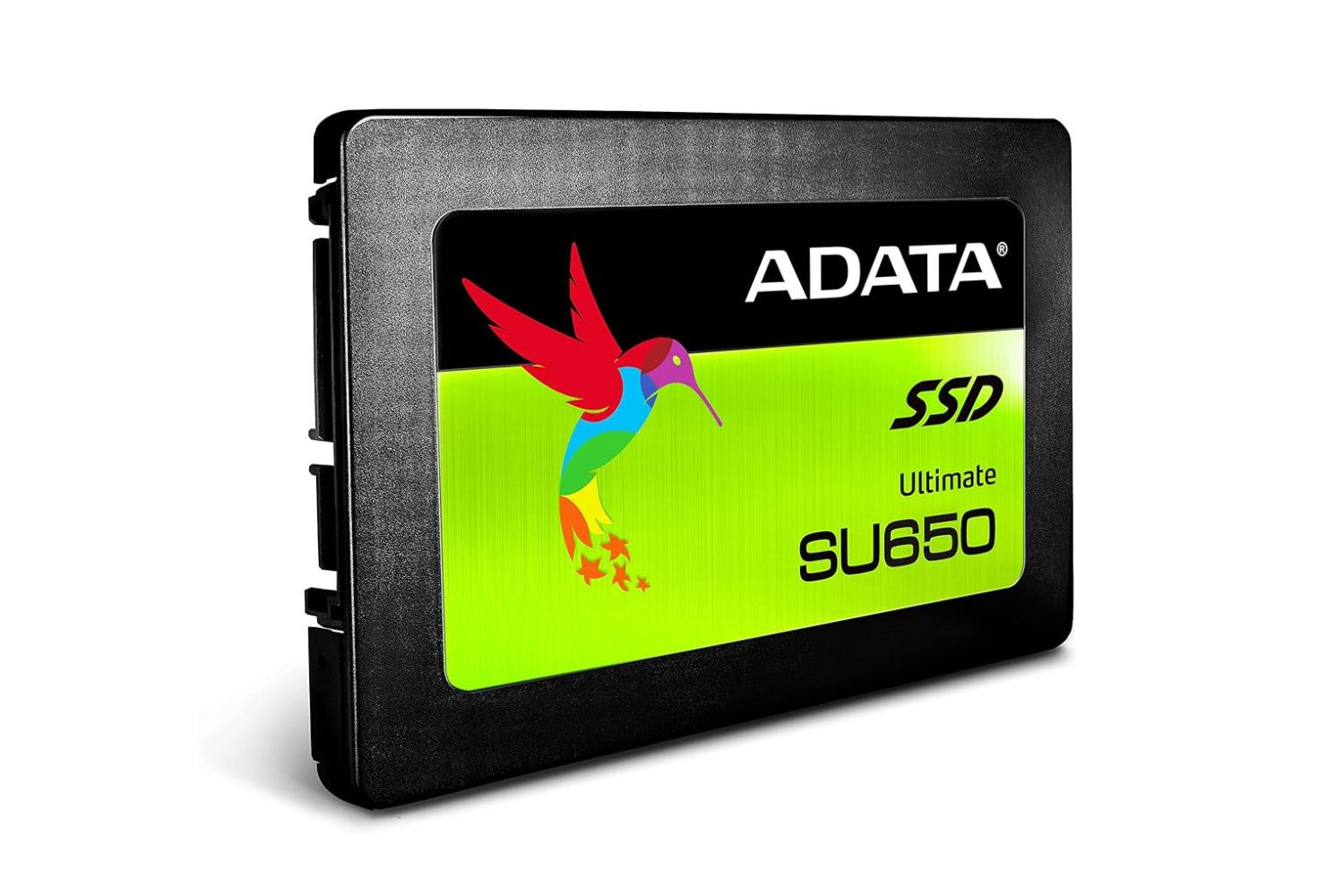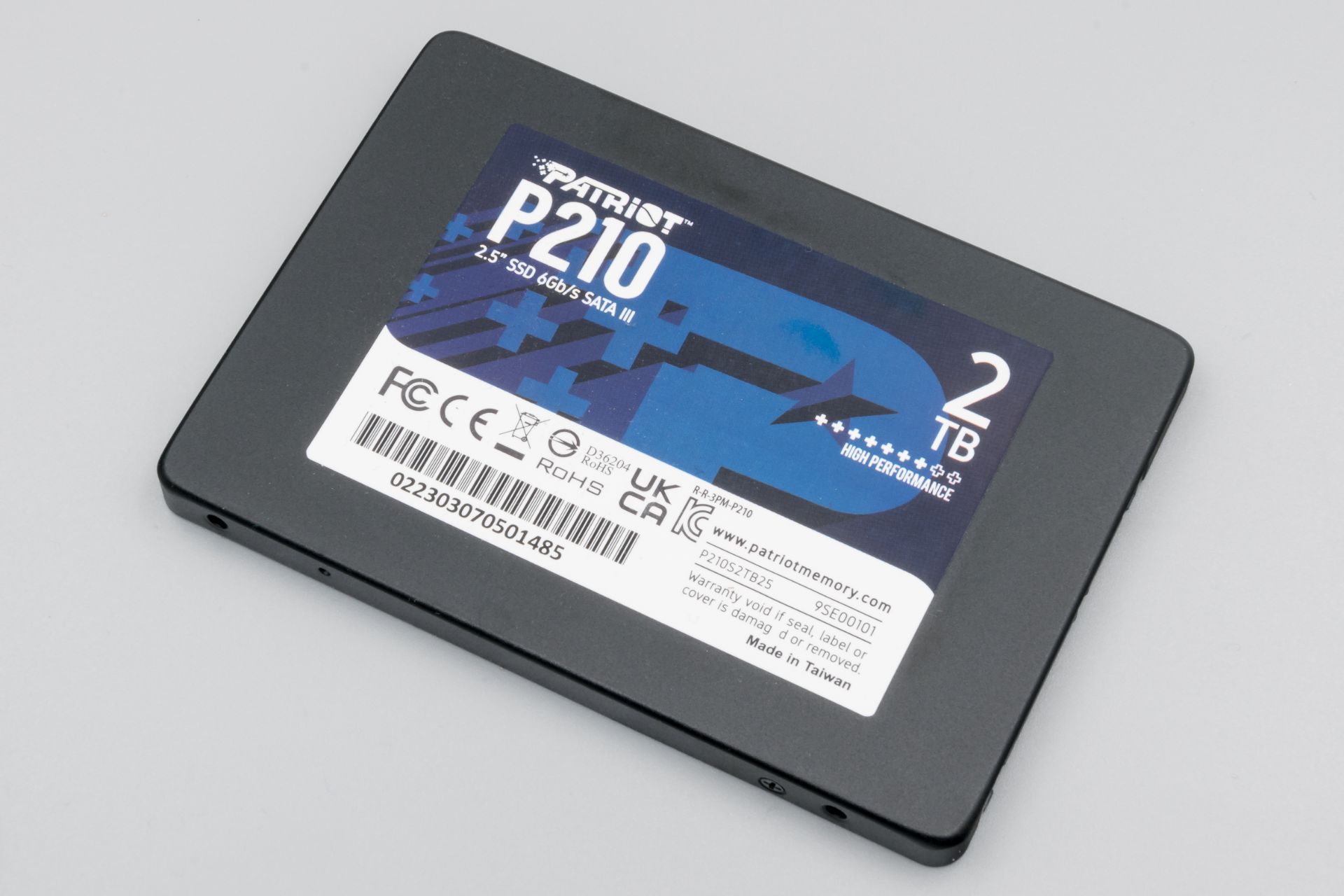Introduction
Welcome to the world of solid-state drives (SSDs)! These innovative storage devices have become increasingly popular in recent years due to their lightning-fast performance and reliability. If you’re new to the world of SSDs, you may have heard the term “read write speed” tossed around, but what exactly does it mean?
Read write speed refers to the rate at which data can be read from or written to an SSD. It plays a crucial role in determining how quickly your system can access and transfer files, applications, and data. Understanding read write speed is essential for anyone looking to optimize the performance of their SSD and ensure a seamless computing experience.
In this article, we will delve into the concept of read write speed for SSDs, explain why it is important, explore how it is measured, and discuss what can be considered a good read write speed for these drives. We will also look at various factors that can affect the read write speed of an SSD and provide helpful tips to improve its performance.
Whether you are a gamer, a graphic designer, a video editor, or simply someone who values speed and efficiency in their computing tasks, understanding read write speed for SSDs will empower you to make informed decisions when purchasing and optimizing these storage devices.
What is Read Write Speed for SSD?
Read write speed refers to the speed at which data can be read from or written to a solid-state drive (SSD). It is a crucial performance metric that determines how quickly your SSD can retrieve and store data. The read write speed is typically measured in megabytes per second (MB/s) and is an important factor to consider when choosing an SSD.
When data is read from an SSD, the drive retrieves the information and transfers it to the computer’s memory for processing. On the other hand, when data is written to an SSD, the drive stores the information on its memory cells. The read write speed directly impacts how quickly these read and write operations can be performed, significantly influencing the overall responsiveness and performance of the system.
SSDs are known for their superior read and write speeds compared to traditional hard disk drives (HDDs). This is because SSDs use flash memory, which allows for faster access times and data transfer rates. While HDDs rely on spinning disks and mechanical read/write heads, SSDs have no moving parts, resulting in faster read and write operations.
It is important to note that the read write speed of an SSD can vary depending on the type and model of the drive. Generally, higher-end SSDs tend to have faster read write speeds, while budget-friendly options may have more modest performance levels. Keep in mind that the read write speed of an SSD is just one aspect of its overall performance, and other factors such as capacity, endurance, and reliability should also be considered when making a purchasing decision.
Overall, the read write speed of an SSD directly affects the speed at which your system can perform tasks such as booting up, launching applications, opening large files, and transferring data. Therefore, it is crucial to understand and prioritize read write speed when choosing an SSD to ensure optimal performance for your specific needs.
Why is Read Write Speed Important for SSDs?
The read write speed of an SSD plays a crucial role in determining the overall performance and user experience. Here are several reasons why read write speed is important for SSDs:
1. Faster Data Transfer: A higher read write speed allows for faster data transfer between the SSD and other system components. This means that files and applications can be accessed and loaded more quickly, resulting in reduced wait times and improved productivity.
2. Improved System Responsiveness: With faster read write speeds, the operating system and software applications can be launched and executed more swiftly. This translates to a more responsive and seamless computing experience, especially when multitasking or performing resource-intensive tasks.
3. Smooth Gaming Performance: Gamers can benefit greatly from SSDs with high read write speeds. Faster data retrieval and storage enable quicker loading times for games, reducing the time spent on loading screens and enhancing gameplay fluidity.
4. Efficient Content Creation: Content creators, such as video editors and graphic designers, frequently work with large files that require fast read write speeds. Rendering, exporting, and saving projects can be accomplished more efficiently with an SSD that has a high read write speed, leading to increased productivity.
5. Seamless Multimedia Playback: Streaming high-quality videos, playing music, and viewing images require data to be read from the SSD at a rapid pace. A faster read write speed ensures smooth playback without buffering or stuttering, enhancing the overall multimedia experience.
6. Quicker File Transfers: Whether you’re transferring files between external storage devices or sharing files with others, a higher read write speed allows for faster file transfers. This not only saves time but also improves workflow efficiency, especially when dealing with large file sizes.
In essence, the read write speed of an SSD directly impacts system performance, responsiveness, and overall user satisfaction. The faster the read write speed, the quicker the data can be accessed, transferred, and stored, resulting in a more efficient and enjoyable computing experience.
How is Read Write Speed Measured for SSDs?
Measuring the read write speed of an SSD involves various performance tests that assess the drive’s ability to read and write data. These tests provide valuable insights into the SSD’s overall performance and help users determine if it meets their requirements. Here are the common methods used to measure read write speed for SSDs:
1. Sequential Read/Write Speed: This test measures the speed at which data can be read or written in a continuous, linear manner. It involves transferring a large file from the SSD to the computer or vice versa. The sequential read speed represents how quickly the SSD can retrieve large chunks of data, while the sequential write speed indicates the speed at which it can store large files.
2. Random Read/Write Speed: Unlike sequential tests, random tests simulate real-world scenarios where data is accessed or written in a fragmented manner. These tests involve reading or writing multiple small files or accessing different parts of a single file simultaneously. Random read/write speed is particularly important for tasks that involve frequent small file operations, such as loading applications, opening documents, or navigating through the file system.
3. Input/Output Operations Per Second (IOPS): IOPS measures the number of input or output operations an SSD can perform in a second. It provides a more granular view of the SSD’s ability to handle random read and write operations. Higher IOPS typically indicate better performance for tasks that involve smaller file sizes and random access patterns, such as database operations or virtual machine disk usage.
4. CrystalDiskMark and AS SSD Benchmark: These popular benchmarking software tools are commonly used to measure read write speed for SSDs. They provide a comprehensive analysis of an SSD’s performance by conducting various tests, including sequential and random read/write speeds. These tools display the results in a user-friendly format, making it easier to compare different SSDs and identify the most suitable one for specific use cases.
It’s important to note that read write speeds can vary depending on factors such as drive capacity, controller technology, firmware optimizations, and file types. Therefore, it is recommended to consider multiple performance tests and benchmarks from reliable sources to get a comprehensive understanding of an SSD’s read write speed.
What is a Good Read Write Speed for SSDs?
The ideal read write speed for an SSD depends on the specific needs and use cases of the user. However, in general, a good read write speed for SSDs can be defined as follows:
1. Sequential Read/Write Speed: For most users, a minimum sequential read speed of 500MB/s and a minimum sequential write speed of 400MB/s is considered good. These speeds are typically sufficient for everyday tasks such as web browsing, document editing, and media playback.
2. Random Read/Write Speed: A good random read speed for SSDs is around 10,000 IOPS or higher. This ensures smooth and snappy performance when accessing smaller files or performing tasks that involve frequent random read operations. Additionally, a good random write speed of around 30,000 IOPS or higher enables efficient storage of data and faster execution of write-intensive applications.
3. Gaming and Multimedia: Gamers and multimedia enthusiasts may benefit from higher read write speeds. For a smoother gaming experience, an SSD with a sequential read speed of 1,000MB/s or higher is recommended. Similarly, for seamless video playback and editing, a sequential write speed of 600MB/s or higher is desirable.
4. Professional Workstations: Professionals who work with resource-intensive applications such as video editing, 3D rendering, or data analytics may require even higher read write speeds. For these demanding tasks, SSDs with sequential read speeds of 2,000MB/s or higher and sequential write speeds of 1,000MB/s or higher are considered good.
It’s important to note that while higher read write speeds can enhance performance, they may come at a higher cost. Therefore, users should consider their specific needs and budget when selecting an SSD.
Furthermore, bear in mind that an SSD’s read write speed is just one aspect of its overall performance. Factors such as durability, reliability, endurance, and compatibility with other hardware should also be taken into account when choosing an SSD.
To determine the appropriate read write speed for your SSD, consider the tasks you perform regularly and the performance requirements of your applications. By matching your needs to the recommended speeds, you can find an SSD that strikes a good balance between performance and cost.
Factors that Affect Read Write Speed of SSDs
Several factors can influence the read write speed of an SSD. Understanding these factors will help you make informed decisions when selecting an SSD and optimizing its performance. Here are the key factors that can affect the read write speed of SSDs:
1. NAND Flash Technology: The type and generation of NAND flash memory used in an SSD can impact its read write speed. SLC (Single-Level Cell) and MLC (Multi-Level Cell) NAND are commonly found in consumer-grade SSDs, with SLC offering faster speeds but at a higher cost. Newer generations of NAND flash, such as TLC (Triple-Level Cell) and QLC (Quad-Level Cell), have slower write speeds but offer higher storage capacity at a lower cost.
2. Controller: The SSD controller plays a crucial role in managing data transfers between the flash memory cells and the computer. A high-quality controller can improve the read write performance of an SSD. Different controllers have varying capabilities, including error correction, wear leveling, and garbage collection, which can impact the overall speed and reliability of the drive.
3. Interface: The interface between the SSD and the computer affects the maximum transfer speeds that can be achieved. Common interfaces for consumer-grade SSDs include SATA (Serial ATA) and NVMe (Non-Volatile Memory Express). NVMe offers significantly faster read write speeds compared to SATA and is the preferred choice for high-performance SSDs.
4. Firmware Optimization: The SSD’s firmware plays a critical role in managing operations and optimizing performance. Regular firmware updates from the manufacturer can improve compatibility, fix bugs, and enhance read write speed. It is important to keep your SSD’s firmware up to date to ensure optimal performance and compatibility with your system.
5. Drive Capacity: The capacity of an SSD affects its performance. In general, larger capacity SSDs tend to have faster read write speeds compared to their lower capacity counterparts. This is due to the design of the flash memory chips and how data is distributed across them. However, it’s important to note that the impact of drive capacity on read write speed diminishes as SSD technology advances.
6. Overprovisioning: Overprovisioning is the practice of allocating a portion of the SSD’s total storage capacity as spare space. This helps improve performance, endurance, and overall speed. By leaving a buffer of unallocated space, the SSD can perform wear leveling and garbage collection more effectively, resulting in better read write speeds and increased longevity.
7. Temperature and Usage: Extreme heat or operating the SSD under heavy workload conditions for prolonged periods can affect its read write speed. Excessive heat can cause thermal throttling, reducing the performance of the SSD. Therefore, it’s important to ensure proper cooling and avoid excessive usage to maintain optimal read write speeds.
By considering these factors and choosing an SSD that aligns with your specific needs and usage patterns, you can optimize the read write speed and overall performance of your storage solution.
Tips to Improve Read Write Speed on SSDs
While SSDs inherently offer faster read write speeds compared to traditional hard drives, there are several steps you can take to further enhance their performance. Here are some tips to improve the read write speed on your SSD:
1. Enable AHCI Mode: Ensure that your SSD is operating in AHCI (Advanced Host Controller Interface) mode in the BIOS settings of your computer. This mode enables advanced features and optimizations specific to SSDs, resulting in improved read write performance.
2. Update Firmware: Regularly check for firmware updates from your SSD manufacturer and apply them when available. Firmware updates often include performance enhancements and bug fixes that can boost the read write speed of your SSD.
3. Trim Support: Make sure that TRIM, a command that allows the operating system to inform the SSD which blocks of data are no longer in use, is enabled. TRIM helps maintain optimal performance and speed by freeing up unused space for new data to be written without affecting performance.
4. Optimize Operating System: Ensure that your operating system is properly optimized for SSD usage. Disable unnecessary services, disable indexing on the SSD, and enable features like Superfetch and Prefetch that can improve read write performance.
5. Update Drivers: Keep your system drivers up to date, including the drivers specific to your SSD and storage controller. Updated drivers can offer better compatibility and performance optimizations to improve the read write speed of your SSD.
6. Manage Storage Wisely: Avoid filling your SSD to its maximum capacity. Leaving some free space on the drive helps maintain its performance and allows for faster read write speeds. Aim to keep at least 10-20% of the SSD’s capacity free for optimal performance.
7. Avoid Excessive Disk Activity: Minimize unnecessary read and write operations on the SSD. Be mindful of background processes, excessive disk scanning, or applications running in the background that may consume SSD resources. This will help free up resources for more critical tasks and improve overall read write speed.
8. Use High-Quality Cables and Ports: If you have an NVMe SSD, make sure you are using high-quality cables and compatible ports. Poor-quality cables or outdated ports can limit the read write speed of your SSD. Verify that your motherboard’s M.2 slot supports the maximum speed of your SSD.
9. Regular Maintenance: Perform regular maintenance tasks such as disk cleanup, defragmentation (for HDDs, not SSDs), and disk error checking. This can help optimize the file system and improve read write performance.
10. Upgrade to a Faster SSD: If your current SSD is still not meeting your performance needs, consider upgrading to a higher-speed model or switch to an NVMe SSD if your motherboard supports it. NVMe SSDs generally offer faster read write speeds compared to SATA-based SSDs.
By following these tips, you can maximize the read write speed of your SSD and ensure optimal performance for your system. Remember to consider the specific requirements of your use cases and implement the tips accordingly for the best results.
Conclusion
Read write speed is a critical factor to consider when choosing and optimizing solid-state drives (SSDs). It determines how quickly data can be read from and written to the drive, directly impacting overall system performance and user experience.
In this article, we have explored the concept of read write speed for SSDs, understanding the importance of this metric in various use cases. We have discussed how read write speed is measured, identifying sequential and random read/write speeds as well as IOPS as common benchmarks.
We have also considered what can be considered a good read write speed for SSDs, taking into account different requirements for everyday tasks, gaming, multimedia, and professional workstations. It is essential to align the SSD’s performance with specific needs and budget considerations.
Furthermore, we have examined the factors that can affect read write speed, including NAND flash technology, the SSD controller, interface, firmware optimization, drive capacity, overprovisioning, and environmental factors.
To optimize the read write speed of an SSD, we have provided useful tips, such as enabling AHCI mode, updating firmware and drivers, managing storage wisely, and performing regular maintenance. These tips can help leverage the full potential of an SSD and enhance its performance.
Remember that read write speed is just one aspect of SSD performance, and factors such as durability, reliability, endurance, and compatibility should also be considered when choosing an SSD.
By understanding read write speed, its significance, and the factors that influence it, you can make informed decisions when selecting an SSD and take the necessary steps to optimize its performance. Whether you are a casual user, gamer, content creator, or professional, a well-performing SSD with a good read write speed can significantly improve your computing experience.







